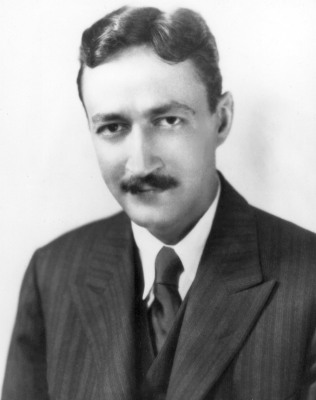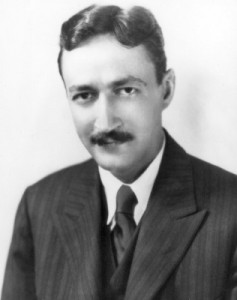
GOOD MORNING P.O.U.!
We continue our series on Passing…
JEAN TOOMER
(December 26, 1894 – March 30, 1967)
Jean Toomer’s Conflicted Racial Identity
On August 4, 1922, about a year before he published his first book, Cane, Jean Toomer, age 27, wrote to his first love, a black teenager named Mae Wright, confessing his ambivalence about the dogged pursuit by African-Americans of Anglo-American cultural ideals: “We who have Negro blood in our veins, who are culturally and emotionally the most removed from Puritan tradition, are its most tenacious supporters.” That would be one of the last times he admitted his own Negro ancestry, either publicly or privately. Six years later, Georgia O’Keeffe—Toomer’s friend and later lover—wrote to her husband, Alfred Stieglitz, describing the way Toomer, then living in Chicago, was identifying himself: “It seems that in Chicago they do not know that he has Negro blood—he seems to claim French extraction.”
When we were working on a new Norton critical edition of Cane, a masterpiece of modernism composed of fiction, poetry, and drama, we confronted the question of Toomer’s race. Literary critics and biographers have long speculated about how he identified himself, but too often they have chosen not to conduct research into public documents about the topic. Was Toomer—a central figure in two faces of American modernism, the New Negro (or Harlem Renaissance) Movement and the Lost Generation—a Negro who, following the publication of Cane, passed for white?
Toomer is known for proclaiming a new, mixed racial identity, which he called “American.” In an era of de jure segregation, such a claim was defiantly transgressive. But he may have been far more conflicted about his identity than his noble attempt to question American received categories of “race” might suggest.
Given the importance of the subject, we commissioned some original biographical research by the genealogist Megan Smolenyak. We can now understand more fully than ever conflicts within Toomer’s thinking about his race, as he expressed them in public documents, including the federal census, two draft registrations, his marriage license to the white writer Margery Latimer, and in statements to the news media.
In June 1917, Nathan Eugene Pinchback Toomer registered for the draft in Washington. He is recorded as an unemployed student, single, having an unspecified disability (two of his biographers have suggested “bad eyes and a hernia gotten in a basketball game”). He is listed as a “Negro.” The 1920 census shows Toomer boarding with other lodgers in the home of an Italian couple on East Ninth Street in Manhattan. The census enumerator inaccurately listed his birthplace as New York, suggesting that Toomer may not have provided the information himself. His race is listed as “white.”
In the 1930 census, Toomer is listed as a resident, with many others, at 11 Fifth Avenue. Because of the accuracy of the other data contained in the document—including his birthplace, his parents’ states of birth, and his occupation as a freelance writer—it is likely that he furnished the details himself. The enumerator listed him as “white.” At the very least, if we are right, Toomer did not correct the designation.
A year later, on October 30, 1931, Toomer married Latimer in Portage, Wis. Both the bride and groom are identified as “white” on the marriage license. According to Cynthia Earl Kerman and Richard Elridge, Toomer biographers, Latimer was aware of what she termed “the racial thing”: that is, that Toomer was a Negro. Though she shared Toomer’s vision of a new race in America, probably neither she nor he was prepared for headlines like the one published regarding the marriage: “Negro Who Wed White Writer Sees New Race.” While Toomer proclaimed that his union was evidence of a “new race in America, … neither white nor black nor in-between,” and that it was simply one between “two Americans,” the news media chose to focus upon only the most sensational aspects of the nuptials.
In 1942, Toomer registered once again for the draft. He identified himself as Nathan Jean Toomer, married to Marjorie C. Toomer. She was his second wife, the white daughter of a wealthy stockbroker whom he had married in Taos, N.M., after his first wife died in childbirth. He is described as 5-foot-10, 178 pounds, with black hair and eyes, and a “dark brown complexion.” He is identified as a “Negro.”
It is clear from these documents that Toomer self-identified as Negro in 1917, when he first registered for the draft. Then either he or a roommate decided to give his identity as “white” on the census of 1920. Similarly, Toomer either self-identified as “white” to the enumerator of the 1930 census or failed to say that he was, in fact, born a Negro (at that time, enumerators had the sole authority to determine the race of a resident). A year later, on his marriage license, he self-identified as “white.” He is identified as a “Negro” again, however, on his World War II draft registration—perhaps because the registrar, Edith Rider, who was black, according to the 1930 census, would have known from news-media accounts of his two interracial marriages.
In the course of the 25 years between his 1917 and 1942 draft registrations, it seems that Toomer was endlessly deconstructing his Negro ancestry. During his childhood and adolescence in Washington, as a member of the mulatto elite, he lived in both the white and the black worlds. At times he resided in white neighborhoods, but he was educated in all-black schools. Toomer would write that it was his experience in that special world, “midway between the white and Negro worlds,” that led him to develop his novel “racial position” as early as 1914, at the age of 20, when he defined himself as an “American, neither white nor black.”
(CLICK BELOW TO CONTINUE TO PAGE 2)

